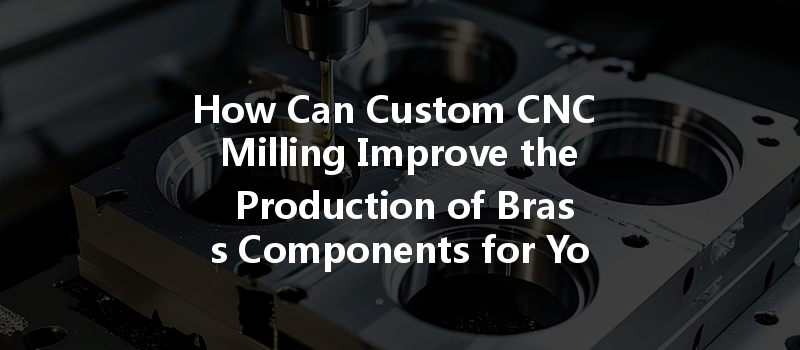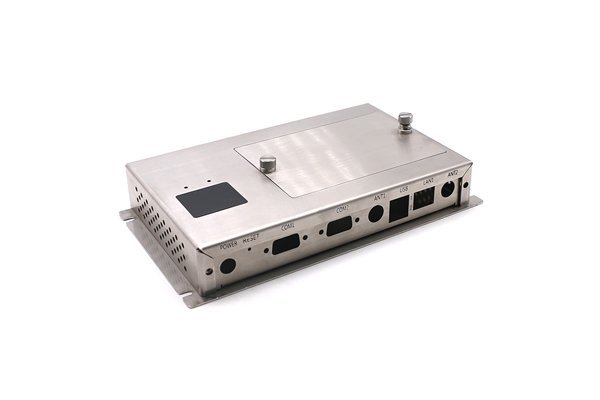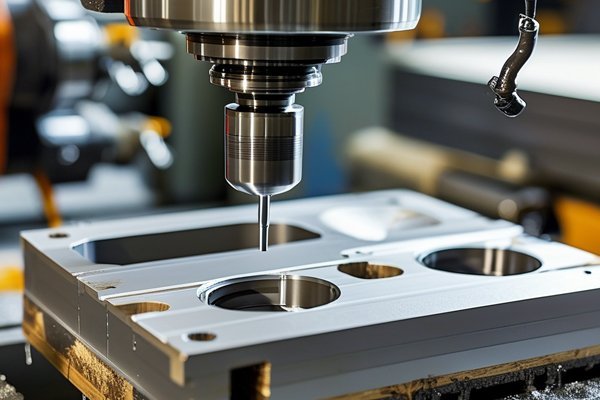Did you know that CNC machining, including custom CNC milling, can increase production efficiency by up to 50% while reducing material waste by nearly 20%? This staggering statistic highlights the potential of adopting precision machining techniques in manufacturing processes, particularly in producing complex components like brass parts. If you’re in a project that requires high-quality brass components, understanding custom CNC milling and its benefits could be the key to elevating your production game.
In this comprehensive blog post, we’ll dive deep into the advantages of custom CNC milling for brass components, the processes involved, applicable technologies, factors to consider, and solutions to common challenges in production. By the end, you’ll be well-equipped with insights that can help streamline your manufacturing processes and enhance the quality of your final products.
Understanding CNC Milling
What is CNC Milling?
Computer Numerical Control (CNC) milling is a machining process that utilizes computer-controlled machines to remove material from solid brass blocks to create precise components. Through the use of specialized software and various cutting tools, CNC milling allows for intricate shapes, dimensions, and finishes to be achieved with exceptional accuracy. This method is superior to traditional manual machining in terms of repeatability, speed, and scalability.
Why Choose Brass?
Brass, an alloy primarily made of copper and zinc, is valued in various industries for its outstanding properties—such as corrosion resistance, malleability, and excellent thermal conductivity. These attributes make it a popular choice for a range of applications, including plumbing fittings, electrical connectors, and ornamental fixtures. Incorporating custom CNC milling into the production of brass components can significantly enhance the efficiency and quality of the final product.
Advantages of Custom CNC Milling for Brass Components
One of the most remarkable benefits of custom CNC milling is the precision with which it operates. CNC machines can achieve tolerances of up to 0.001 inches. This level of accuracy is vital for applications where precision is non-negotiable, such as in aerospace or medical components.
Every project is unique, and custom CNC milling allows for flexibility in design. Whether it’s a one-off prototype or a large production run, CNC technology can adapt quickly to different specifications, enabling manufacturers to create tailored solutions for specific needs.
Once a CNC milling process is established for a particular component, scaling production is straightforward. By leveraging the power of automation, manufacturers can produce high volumes of brass components without sacrificing quality or increasing production time significantly.
With traditional machining, setups, and tooling changes can take considerable time. In contrast, CNC milling setups can be expedited, leading to shorter lead times. This efficiency is especially beneficial for projects with tight deadlines.
CNC milling optimizes material usage by precisely calculating the necessary cuts and dimensions based on the design, leading to less scrap material. This not only saves money but also proves advantageous from an environmental perspective.
The CNC Milling Process for Brass Components
The first step in custom CNC milling involves designing the brass component using computer-aided design (CAD) software. Here, engineers can create and visualize the component while taking into account specific requirements, tolerances, and desired features. Prototyping may also be carried out using rapid manufacturing techniques to validate designs before full-scale production.
Once the design is finalized, a CNC programmer converts the CAD files into a language that computers can understand, often G-code or M-code. This code directs the milling machine on how to produce the part, including details concerning tool path, speed, and feed rate.
After programming, the CNC milling machine is prepared by installing the necessary tools and securing the brass workpiece onto the machine bed. Precision in this setup is critical to ensure that the finished part adheres to specifications.
The CNC machine executes the programmed commands, utilizing various cutting tools to remove excess material from the brass block. This phase may include several operations such as contour milling, face milling, drilling, or tapping, resulting in the desired shape and features.
Once milling is complete, the brass components undergo quality checks. Measurements are taken to ensure tolerances are met, and visual inspections are conducted to confirm a high-quality finish. This step may utilize advanced inspection technologies like coordinate measuring machines (CMM) for accuracy.
Technologies Enhancing Custom CNC Milling
The world of CNC milling for brass components has seen multiple advancements in technology that have significantly improved efficiency, accuracy, and adaptability. Some key technologies include:

5-axis CNC milling machines allow for the simultaneous movement along five different axes, providing the ability to create complex geometries without repositioning the workpiece. This technology reduces cycle times and improves accuracy, particularly beneficial for intricate brass components.
The introduction of high-performance cutting tools engineered for machining brass can profoundly impact performance. These tools are designed to withstand higher speeds and feed rates, leading to faster machining and improved surface finishes.
Integrating automation technologies, such as robotics and conveyor systems, can enhance production efficiency. Automated loading and unloading of workpieces considerably reduce downtime, allowing for continuous manufacturing processes.
Computer-Aided Manufacturing (CAM) software has advanced to allow for more sophisticated programming, making it possible to simulate machining processes before actual production. This capability helps identify potential issues early, saving time and resources.
Factors to Consider for Custom CNC Milling
When embarking on a project that involves custom CNC milling for brass components, there are several factors to consider for optimal outcomes:
While brass is generally an excellent choice for various applications, it’s essential to select the appropriate brass alloy based on desired characteristics, such as strength, machinability, and corrosion resistance.
The complexity of the design will directly impact machining time, tooling requirements, and costs. Simplifying designs where possible can lead to more efficient production.
Clearly defined tolerances are crucial from the outset of the design process. Understanding the limits of your CNC machinery will help ensure you get the best quality parts.
Consider the finishing processes required after CNC milling. Depending on the application, secondary processes like anodizing, plating, or polishing may be necessary to enhance performance or appearance.
Common Challenges in CNC Milling of Brass Components
Despite the numerous advantages, custom CNC milling does come with its challenges. Understanding these hurdles and finding solutions is essential for effective production.
Brass can be abrasive, causing cutting tools to wear more quickly than they would with softer materials. Selecting the right tool material and cutting parameters can mitigate this issue. Regular monitoring and changing of tooling are essential for maintaining quality.
Due to its thermal properties, certain brass alloys can expand during machining, leading to distortion. Proper cooling techniques and maintaining moderate cutting speeds can help manage heat generation.
Large production runs can lead to inconsistencies, making quality control a pivotal aspect. Implementing strict QA protocols and utilizing advanced inspection technology can help catch defects early.
Regular maintenance and calibration of CNC machinery are critical. Inaccuracies in machine calibration can yield errors in component dimensions. Establishing a routine maintenance schedule is a practical solution.
In summary, custom CNC milling is an invaluable technique in the production of brass components, offering precision, customization, and efficiency that traditional methods cannot match. By understanding the CNC milling process, technological advancements, and the factors influencing production, you can unlock the full potential of this method in your projects.
Whether you’re an engineer looking for manufacturing solutions or a business owner aiming to enhance product quality, recognizing the importance of CNC milling for brass components cannot be overstated. The efficiencies gained, the reduced lead times, and the minimized waste are all compelling reasons to consider this technology.
Now that you are armed with knowledge about the ins and outs of custom CNC milling and its role in brass component production, consider how you can integrate these insights into your next project. The future of manufacturing is here, and it could very well start with a single CNC milled brass component!
This blog serves as a reminder of the significant gains your project can achieve through adopting advanced CNC milling techniques. Embrace the potential of technology and continue to explore how it can enhance your production process.






